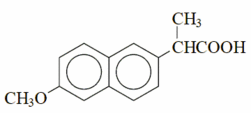Byline: SARA ECKEL
BAYER CONSUMER CARE PRESCRIBES SOME STRONG MEDICINE FOR AN AILING BRAND. THE MEMO The problem was big enough to give any marketing manager a headache: How to help a brand that even venerable consumer products giant Procter & Gamble couldn't build. That was the dilemma brand managers from Bayer Consumer Care faced in 1996, when they inherited Aleve, the over-the-counter pain medication, from P&G. With P&G, Aleve had floundered since its 1994 launch, never gaining more than a 6 percent share of the market. How could Bayer strengthen Aleve's anemic sales?
THE DISCOVERY First, Bayer set out to identify the Aleve user. In 1997, the Bayer team hired New York-based CLT Research Associates to conduct 800 in-home interviews, a random sample of men and women aged 18 to 75 who had used a nonprescription pain reliever in the past year. CLT discovered that about 24 percent of those interviewed fell into a segment called "pain busters" - consumers who were heavy users of over-the-counter painkillers, and who were eager to try new brands. About 35 percent of these pain busters had tried Aleve in the past year, but their medicine cabinet was full of other brands as well. The challenge: How to convince these pain busters to choose Aleve above other options?
To conjure up an appropriate marketing message, Bayer tapped Moskowitz Jacobs Inc. The White Plains, New York-based market research firm asked 249 respondents aged 18 to 69 to rate various statements about Aleve. The company discovered that statements that promised "control over pain," or "freedom to do the things you want," were important emotional triggers for pain buster consumers. Moskowitz also learned that consumers were interested in minimizing the number of pills they took to relieve pain. Aleve's claim of all-day pain relief with just two blue pills - compared with as many as eight pills of competing brands - would warrant sober attention from consumers.
The next step: to marry the imagery of freedom and control with Aleve's demographic and psychographic target market. Bayer managers analyzed data from Medioscope - a syndicated source for OTC drug data - Nielsen Panel Data, MRI, and Simmons and fleshed out the findings with a series of focus groups moderated by Croton-on-Hudson, New York-based Viewpoints Consulting, Inc. The analysis revealed that Aleve's users were more likely to suffer from arthritis and back pain than the average analgesic user. The team also discovered that loyal Aleve users juggle many commitments in their lives, and are passionate about their accomplishments. This helped Bayer to "put a face" on the benefit of taking Aleve: "liberation from tough pain, making a dramatic difference in the quality of your life."
THE TACTICS Aleve's "Dramatic Difference" ad campaign launched in 1999, with spots designed by BBDO Chicago. The new campaign mirrored the message that Aleve users had stressed in the focus groups. Each ad was framed as a letter from an Aleve user, who writes to thank the brand for getting rid of her pain and helping her return to her life. The most successful spot, "Donna W," portrays an older woman who was having trouble walking and had spent years diligently searching for a way to end her pain - until finally she found a doctor who suggested Aleve. By the end of the commercial, she's dancing. In the final frame, she's concluding the letter and thanking the brand for improving her life.
THE PAYOFF Thanks to BBDO's Dramatic Difference ad campaign, Aleve sales have started to live up to its potential. In 2000, sales of the medication were 16 percent higher than in 1999. In a flat category, Aleve's market share climbed to 7 percent, its all-time best. The number of consumers who could recall the brand unaided increased by 8 percentage points between 1999 and 2000 - to 44 percent in 2000. Similarly, unaided recall of Aleve advertisements went up 7 percentage points, to 33 percent in 2000. Empowering women to rid themselves of pain seems to have been just the medicine that Aleve needed.
Advertiser Bayer Product Aleve Campaign "Dramatic Difference" Advertising Agency BBDO Chicago Research Companies IRI, Monroe Mendelsohn Research, CLT Research Associates Inc., Viewpoints Consulting, Carol Bernstein Associates, Ipsos-ASI, Media Marketing Assessment, Medioscope, Nielsen Panel Data, Simmons Market Research Bureau
COPYRIGHT 2001 Copyright by Media Central Inc., A PRIMEDIA Company. All rights reserved.
COPYRIGHT 2003 Gale Group



